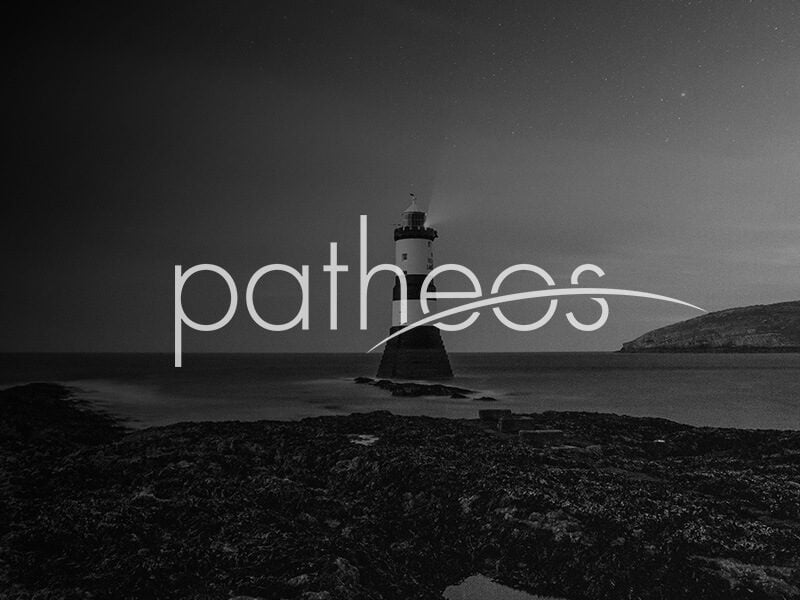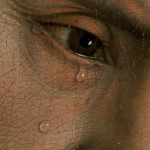Denver, Colo., Oct 10, 2017 / 02:17 pm (CNA/EWTN News).- Maria had been struggling with some depressive and anxious thoughts for a while, although at the time, she didn’t recognize them as such. Probably because she was 14 years old. When she shared her struggles with someone in her Catholic community, the woman told Maria that she was worried that “the devil was working his ways” in her, and used that to pressure her into going on a week-long retreat out of state. “Sure, retreats are great,” Maria told CNA. “But pretty sure I just needed a therapist at that point in my life. And pretty sure I had already given valid reasons for why I wasn't interested in buying a plane ticket for a retreat.” When Catholics experience spiritual problems, the solutions seem obvious - talk to a priest, go to confession, pray, seek guidance from a spiritual director. But the line between the spiritual and the psychological can be very blurry, so much so that some Catholics and psychologists wonder if people are too often told to “pray away” their problems that may also require psychological treatment.When body and soul are seen as unrelated Dr. Gregory Bottaro is a Catholic clinical psychologist with the CatholicPsych Institute. He said that he has found the over-spiritualization of psychological issues to be a persistent problem, particularly among devout Catholics. “Over-spiritualization in our time is usually a direct consequence of Cartesian Dualism,” Bottaro told CNA in an e-mail interview. “Decartes is the philosopher who said: ‘I think therefore I am.’ He separated his thinking self from his bodily self, and planted the seed that eventually grew into our current thinking that the body and spirit are separate things. Acting as if the body doesn’t matter when considering our human experience is just as distorted as acting like the spirit doesn’t matter,” he said. Because of this prevalent misconception about the separation of our body and soul, people both in and out of the Catholic Church often feel a stigma in seeking mental help that isn’t there when they need to seek physical help, he said. “We shouldn’t think any less of getting help for mental health than we do for physical health. There are fields of expertise for a reason, and just as we can’t fix every one of our own physical wounds, we can’t always fix every one of our own mental wounds. It is virtuous to recognize our need for help,” Dr. Bottaro said. Virtuous, but not always easy.Just pray Michele is a young Catholic 20-something who was used to being social and involved in various ministries within the Church. But a move to a new city left her usually-bubbly self feeling lonely and isolated. “I felt like a failure spiritually because shouldn't my relationship with God be enough? But, I would come home from work and cry and just lay in my bed. It was hard for me to motivate myself to do anything,” she told CNA. When a friend, also involved in ministry, called to catch up, Michele saw it as a chance to reach out and share some of the feelings that had been concerning her. “I don't remember exactly what I said, but she told me what I was feeling was sinful. I shut down and said I was exaggerating and made up some story about how everything was fine,” she said. Michele waited several more months before seeking help through Catholic Charities, where she was connected to a therapist. She found out that she had attachment disorder, which, left untreated for longer, could have turned into major, long term depression. Derek is also a young 20-something Catholic who was also told to pray away his problems. He was suffering from depressive episodes, where he wouldn’t eat and would sleep for 15 hours a day. His friends’ advice was to pray. It wasn’t until he attempted suicide that he got serious about seeking psychotherapy. Sarah, also a young Catholic and a former FOCUS missionary, had a similar experience. For months, she confessed suicidal thoughts to her pastor and spiritual director, who gave her advice based on the discernment of spirits from St. Ignatius of Loyola. But eventually the thoughts became so intense and prevalent that Sarah called every mandatory reporter she knew, and was admitted to the hospital on suicide watch. “I think part of it is - if someone is trained in something, that’s how they want to fix it,” Sarah told CNA. “If you’re trained in spirituality then you want to use spirituality to fix it. And you absolutely should include spirituality. However, you can’t just pray it away. These are real problems and real medical things. There are events in people’s lives that have happened, and they need to work through that both spiritually and psychologically, and a priest or youth minister can’t do both. They need to get you to someone who’s able to help,” she said. The negative stigma attached to seeking mental help is magnified in the Church because of the “pray it away” mentality, Sarah added. Once prayer doesn’t work, people can feel like spiritual failures, and many people in the Church will distance themselves from someone who is mentally ill. “I can’t be a fully functional young woman who’s working through something and needs help with it,” she said. “It’s either - I’m ok or I’m not.” A Catholic psychologist’s perspective Dr. Jim Langley, a Catholic licensed clinical psychologist with St. Raphael’s counseling in Denver, said he tends to see opposite ends of the spectrum in his patients in about equal numbers - those who over-spiritualize their problems, and those who under-spiritualize them. “Part of the problem is that in our culture, we have such a medically-oriented, science-oriented culture that we’ve sort of gotten away from spirituality, which causes a lot of problems,” he said. As human beings, our minds and our souls are what set us apart from other created things, Langley added, making those aspects of our being most vulnerable to evil attacks. “I know a priest who would explain it like this: Evil is like a germ, and it wants to get in just like bacteria does in our body. And where does bacteria get in? It gets in through our wounds. So if we have a cut on our hand, that’s where bacteria wants to get in and infect us. On the spiritual side, it’s the same thing. Where we have the most sensitive wounds tend to be in our sense of self and our psychology, and so that’s where evil wants to get in at us.” People who tend to ignore the spiritual aspect of their psychological problems cut themselves off from the most holistic approach of healing, Langley added. “The main reason is because it really is God who heals, and almost any psychological issue you’re dealing with is going to have some sort of a spiritual component connected to it, because it has to do with our dignity as a human person.” And while it can be challenging to make people see the spiritual component of their problems, it can also be a challenge to help other people recognize that their spiritual issues might also have a psychological component, he said. Some devout Catholics see it as preferable to say they are suffering from something like the dark night of the soul, rather than to admit that they have depression and may need medication and counseling, he said. “In some ways in our Catholic community, it’s cooler to have a spiritual problem than it is to have a psychological problem,” he said. “The problem with over-spiritualizing is that you cut yourself from so many tools that psychology and even your faith could have to help you to be happy.” Many of the things psychologists do to help their patients includes teaching them “recipes” for happiness, Langley said - re-training their thought patterns, providing practical tools to use when anxiety or depression kick in. But a person who doesn’t recognize an issue as also having a psychological component may be resistant to these methods entirely, including spiritual methods, he said. Catholics who are concerned about seeking psychological help should seek a Catholic psychologist or psychiatrist who can talk about both the spiritual and psychological aspects of healing, Langley said. “People who don’t practice from a Catholic or spiritual perspective can do a pretty good job, but it’s like they’re doing therapy with their hand tied behind their back, because they’re missing out on a whole array of things you can do to help a person.” Therapists who aren’t practicing from a Catholic perspective could also do some unintended harm in their practice, Langley noted. For example, men who are addicted to pornography may be told by a secular therapist that pornography is a healthy release, or couples struggling in their marriage may sometimes be encouraged by secular practitioners to divorce. It’s really a false dichotomy, Langley added, to categorize problems as strictly spiritual or psychological, because oftentimes they are both, and require both psychological and spiritual treatment. “So much of good therapy is helping a person get back in touch with their sense of dignity that God created them with...and as they get more in touch with it, they are actually just more open to God’s love and they’re more open to making changes in their life that might be helpful.”What needs to change? The Catholic experience of mental illness varies. Some found their experience of a mental illness diagnosis in the Church very isolating, while others said it was a great source of healing and support. Langley said that for the most part, he has a great relationship with the clergy in his area. “Most of our referrals come from priests,” he said. “I hardly ever see a priest that is overly convinced that something is spiritual. I think priests really do a pretty good job of saying when something is more psychological.” Some of Langley’s favorite clients are those who are seeking spiritual direction at the same time as therapy, he said, because between therapy and spiritual direction, the person seeking help is usually able to find the right balance of psychological and spiritual strategies that work. Others said they felt the relationship between psychologists and Catholic clergy or other leaders could be stronger. A licensed marriage and family therapist in California, who asked to remain anonymous because he was not authorized to speak to the media, said that priests and mental health professionals should be working together to support those struggling with mental illness, to make them feel more welcome, and to let them know what resources are available. “The faith community hasn't done a great job reaching out for support for those within the community with mental illness, and the mental health community hasn't done a good enough job making itself available to the faith community,” he said. Several Catholics who have had mental illness also said they wished that it were something that was discussed more openly in the Church. “I have thirsted for greater support in the Church,” said Erin, who has depression and anxiety. “That is my biggest struggle as a Catholic with mental illness: not necessarily focusing too much on the spiritual aspects, but people not knowing how to address any other aspect.” She had some suggestions for Catholics who find out their friend has a mental illness. “As Christ would do, and as Job's friends failed to do, please, please just walk with me. And if I bring up something spiritual, feel free to talk about it. If you think I'm shutting you out, ask. If I randomly start crying, hold my hand,” she said. “Finding support in my one friend (who also has a mental illness) has done worlds of good for me. Imagine what could happen if Christians became more vulnerable about their mental illness. What a support system that would be!” Michele said in sharing her story about seeking therapy, she has been surprised at how many Catholics have gone through similar experiences. “I try to be very open about it now because a stigma should not exist.”Catholic psychologists in your area can be found by searching at http://www.catholictherapists.com/ or at https://wellcatholic.com/. The National Suicide Prevention Lifeline can be reached at 1-800-273-8255.Some names in this article have been changed for the protection of privacy. This article was originally published on CNA July 1, 2016. Read more
















